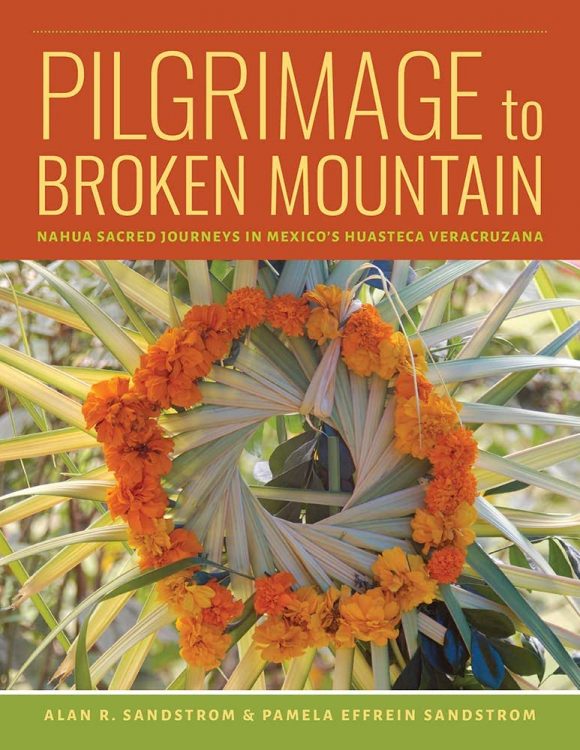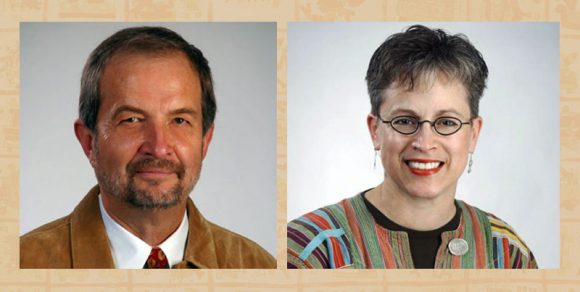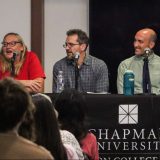Pilgrimage to Broken Mountain: Nahua Sacred Journeys in Mexico’s Huasteca Veracruzana
April 21, 2023
The Department of Religious Studies recently hosted anthropologists Alan and Pamela Sandstrom for the annual Huntington Memorial Lecture. They presented their field research from their latest book, Pilgrimage to Broken Mountain: Nahua Sacred Journeys in Mexico’s Huasteca Veracruzana which traces the couple’s decades-long journey integrating themselves into studying the Nahua people and their culture. “It’s a shame that it’s not very reported on in literature,” said A. Sandstorm.
The Sandstroms have been doing field work since the 1970s, when they decided to start researching ethnography (exploring cultural phenomena from the point of view of the subject) in unknown areas. The Nahua people are in all parts across Mexico, but they decided to focus on the Nahua in the region of Huasteca Veracruz, northeast of Mexico City by the Gulf of Mexico.
The Nahua people are proud descendants of the Aztecs. They speak Nahuatl, the same language the Aztecs spoke and there are roughly two million native speakers. The real number is unknown, since the Mexican census does not include Native Americans, which discounts a large portion of the Nahua population.
The language, however, wasn’t what drew the Sandstroms into this community. It was their religion.
“We found the religion hard to understand. We wanted to know their oral narrative. It looked like a polytheistic religion at the surface, but [their religion] doesn’t fit the polytheistic system with their spirit entities.”
(Polytheism is the belief in multiple deities, which are usually assembled into a pantheon of gods and goddesses, along with their own religious sects and rituals.)
Sandstrom became close with the women in the community, learning something special early on in her research about their culture.
“Gender division is obvious but it’s equitable,” said P. Sandstrom. Despite practicing strict and traditional social responsibilities according to gender, the Nahua believe, “Both men and women’s work is important to establish harmony in the cosmos…heedless behavior of any kind [such as sexual harassment] cause serious misalignments [in the cosmos] which can lead to death, disease, infertility,” she said.
In their objective to learn more about the Nahua religion, they met Nahua ritual specialists;a person of knowledge who knows the oral narratives of the Nahua history, teaches younger generations traditions, holds village wide rituals, and has a wide portfolio of community responsibilities including, somewhat uniquely, paper cutting.
 The Nahuas evoke sacred spirit entities through the medium of cut-paper figures, which they arrange on altars and make the subject of elaborate ritual offerings, including the blood of chickens and turkeys. The cut-paper figures embody forces in the cosmos that are critically important for human well-being and reveal the pantheistic basis of Nahua religion and its foundations in ontological monism.
The Nahuas evoke sacred spirit entities through the medium of cut-paper figures, which they arrange on altars and make the subject of elaborate ritual offerings, including the blood of chickens and turkeys. The cut-paper figures embody forces in the cosmos that are critically important for human well-being and reveal the pantheistic basis of Nahua religion and its foundations in ontological monism.
Nahua rituals are designed to create harmony with the spirit forces that surround them. They accomplish this goal by dedicating gifts to the spirits and by sacrificing their sleep, time, wealth, and heart-felt effort, and thereby show their deep respect for the cosmos and all of its inhabitants.
The Sandstroms dedicated much of their lives’ work into integrating themselves into the Nahua culture to represent the community justly in their research. During their time on campus, they also visited Dr. Rafael Luevano’s Latino/Latina Religious Experience class, explaining that they wanted to document Nahua stories, because they were afraid their traditions would be lost. Nahua villages are fighting modernization, and are at the risk of being lost to the city and industrialization.
The Nahua greatly value the relationship between elements of nature and with people. “We are astounded by the richness of this culture…there’s something wrong with how we’re dealing with [our environment] and something right that they’re doing. Not to romanticize them or anything, but we can learn a lot about how to deal with natural forces in the world,” A. Sandstrom said.
Dr. Luevano wanted his students “to see outstanding scholars who have devoted their lives to the study of indigenous people.”
To learn more about the Nahuas and their cultures, Pilgrimage to Broken Mountain: Nahua Sacred Journeys in Mexico’s Huasteca Veracruzana can be found on Amazon.


